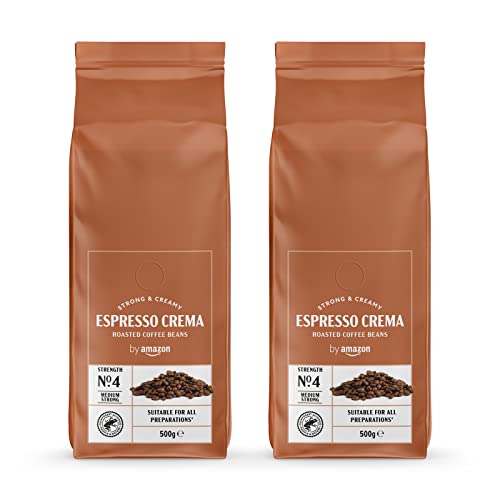Starbucks Coffee Beans 1kg
Starbucks was a cozy cafe situated in Seattle Washington, before it became famous for its peppermint Mochas and red holiday cups. Starbucks' founders were primarily focused on selling whole beans of coffee but did not see the potential in espresso drinks.
That changed when Schultz stepped in. He was determined to show off his roasting and mixing skills.
Origin
Before Starbucks coffee beans reach your cup, they have been through a long and winding trek. Coffee is cultivated almost exclusively in the Coffee Belt. This area extends across the globe between the Tropics Cancer and Capricorn. The climate, soil, and culture of each region affect the flavor of the coffee beans. Starbucks sources its coffee beans from more than 30 countries.
Most Starbucks coffees are sourced from three regions: Latin America, Africa, and Asia-Pacific. These regions are renowned for their full-bodied flavor, balance of acidity and weight. Starbucks also purchases coffee from St. Helena in the South Atlantic Ocean, a volcanic tropical island paradise.
Starbucks coffee beans are roasted to perfection for an incredibly smooth and delicious taste. The coffee beans are ground into a fine powder which is ready to be brewed. Coffeee is mixed with water, and put into the cup to make an exquisite cup. The result is a cup of espresso that is full of flavor and energy.
Starbucks stores sell a variety of single-origin beans. While most Starbucks coffees are made by mixing various beans, they also have a few varieties made from one bean. Single-origin coffees from Starbucks offer a wide range of flavors, including sweet and nutty fruity, chocolatey, and sweet. Certain single-origin beans are certified organic.
While Starbucks's beans are sourced from all across the globe, they have to meet certain standards to be considered specialty coffee. Specialty coffee was first introduced in the 1980s, when roasters and cafes began to experiment with lighter roasting techniques and manual methods. Starbucks hasn't yet begun sourcing its coffee with these standards, but it has since adopted these standards.
In addition, to ensure that its beans are grown in a responsible way, Starbucks works to improve the lives of the people who cultivate their coffee. It offers its coffee farmers a premium over the market price and allows them to invest in their communities. It also promotes sustainability and works to reduce waste. This has led to the creation of new practices in coffee-growing and methods that protect the environment.

Roast
Starbucks roasts beans in large quantities and buys them in bulk. The process of roasting takes between 10 and 15 minutes. The result is that the beans are dark and roasted. Darkly roasted beans have a rich flavor, and a full body. The beans are ground and then delivered to supermarkets and stores in the form of a coffee grind. The coffee that is ground is bitter and is not ideal for making the perfect cup. Most people add lots of sugar, cream or milk as well as flavorings and whipping cream to their coffee. This does not really mask the bitterness of the poor quality coffee, but it can be an effective way of making the drink more appealing.
When the beans are placed into the roaster they begin to steam because of their internal moisture. The "first crack" is a sound that signals the start of the roasting process. At this point the sugars begin to melt and the bound-up water escapes. During this time the structure of the bean breaks down and the oils begin to move outward. This stage is the time at which most coffees are considered to be city roasts.
The beans that were roasted are then cool and are separated from any stones or other impurities that have been ejected from the roaster. They are then inspected by hand before being bagged and sold. Some beans have a dark spot called the quaker. The beans did not change color and taste burned. This is a typical condition and does not mean that the coffee is bad.
The beans are often roast in small batches Sometimes as little as 20 pounds. These are known as "micro lots". This is because every coffee roast will be roasted in accordance with specifications developed by the Starbucks team of masters of coffee. The team of coffee masters designs profiles that are used in all Starbucks(r) roasting facilities across the globe. These profiles ensure that every cup of coffee produced will be consistent and have certain levels of body and flavour.
Flavor
Starbucks purchases their beans directly from the farms where they were grown, to improve the quality of their beans and ensure ethical sourcing. They also plant a coffee tree for every one pound of beans sold. The beans aren't labeled by their origin, but some blends are. Veranda is from Sumatra; Komodo Dragon is from Indonesian; and Anniversary is a mix between the African and central American beans. The beans have a distinctive flavor profile and produce a smooth cup with a delicate blend of sweetness and smoothness. Each sip offers a variety of flavors that leave pleasant notes on the palate.
Weight
The weight of Starbucks beans 1kg depends upon the blend. A Starbucks House Blend, for instance, weighs 14 oz per pound. A pound of Espresso-roast coffee at Walmart on the other hand, weighs 16 ounces. This translates into an increase of 67% at Starbucks in comparison to Wal-Mart.
Starbucks' Pike Place Roast was named after Seattle's famous marketplace. The light-medium roasting brings balance, sweetness and a smoothness to each cup. This blend, made with beans from Latin America is perfect for Americano or espresso. This premium blend comes in a FlavorLock packaging to preserve and protect the flavor. This is Starbucks the brand's signature coffee. This is a fantastic choice for those who love coffee! Made from 100 percent Arabica beans. An ideal gift idea for all Starbucks fans.
